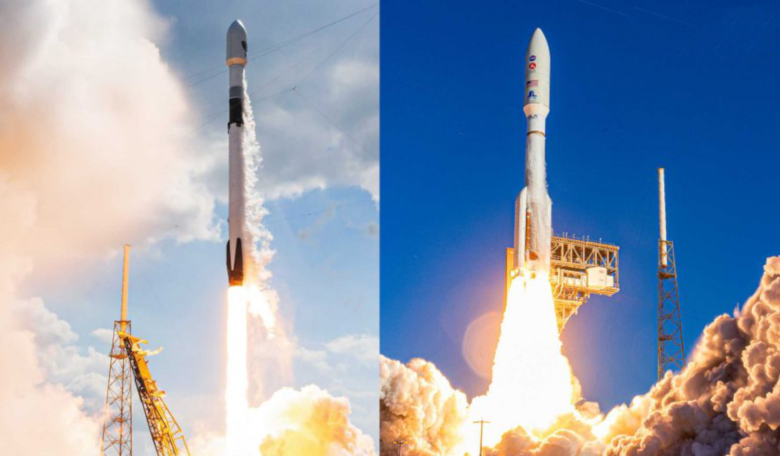The Space and Missile Systems Center (SMC), in partnership with the National Reconnaissance Office (NRO), competitively awarded two Firm-Fixed-Price, Indefinite Delivery Requirement contracts for National Security Space launch services Friday to ULA and SpaceX.
“This is a groundbreaking day, culminating years of strategic planning and effort by the Department of the Air Force, NRO, and our launch service industry partners,” said Dr. William Roper, Assistant Secretary of the Air Force for Acquisition, Technology and Logistics. “Maintaining a competitive launch market, servicing both government and commercial customers, is how we encourage continued innovation on assured access to space. Today’s awards mark a new epoch of space launch that will finally transition the Department off Russian RD-180 engines.”
This competitive acquisition adds to the considerable savings the NSSL program has achieved since the 2013 Phase 1 Block Buy award. The total life cycle cost reduction since the February 2013 program rebaseline now stands at $22 billion. The NSSL program has returned approximately $7 billion in procurement funds to the Department of the Air Force and National Reconnaissance Office, enabling them to fund additional capabilities.
The Space and Missile Systems Center’s Launch Enterprise garnered these savings by creating innovative acquisition strategies, procuring launch services in economic order quantities, and fostering robust competition precipitated by investments in new commercial launch systems that also meet more stressing NSSL needs.
The Phase 2 Procurement contracts are for launch service orders starting in fiscal year 2020 through 2024, with the first missions launching in fiscal year 2022. The United States Space Force’s Space and Missile Systems Center will order launch services annually from ULA and SpaceX.
Consistent with the Acquisition Strategy, ULA will receive a requirements contract for approximately 60 percent of launch services orders and SpaceX will receive a requirements contract for approximately 40 percent of launch services orders over the contract period.
Concurrent with this announcement, the SMC Launch Enterprise, in collaboration with the NRO, will order the first three missions assigned under Phase 2. ULA has been assigned USSF-51 and USSF-106 scheduled for launch in second quarter fiscal year 2022 and fourth quarter fiscal year 2022, respectively.
SpaceX has been assigned USSF-67, scheduled for launch in fourth quarter fiscal year 2022. Future launch services will be placed on subsequent Task Orders by mission and will be publically announced upon issuance.
Task orders for the launch service support and launch service contracts will be issued to ULA for $337M and SpaceX for $316M for launch services to meet fiscal year 2022 launch dates.
“This landmark award begins the dawn of a new decade in U.S. launch innovation, while promoting competition, maintaining a healthy industrial base, and reinforcing our global competitive advantage,” stated Lt. Gen. John Thompson, commander of SMC, and program executive officer for Space. “This acquisition will maintain our unprecedented mission success record, transition National Security Space payloads to new launch vehicles, assure access for current and future space architectures, and cultivate innovative mission assurance practices.”
“This was an extremely tough decision and I appreciate the hard work industry completed to adapt their look forward to working with ULA and SpaceX as we progress towards our first Phase 2
The Space and Missile Systems Center, located at Los Angeles Air Force Base in El Segundo, California, is the U.S. Space Force’s center of acquisition excellence for acquiring and developing military space systems.
The Center’s portfolio includes the Space Launch and Range Systems, Global Positioning System, Military Satellite Communications, Space-Based Environmental Monitoring Systems, Satellite Control Networks, Overhead Persistent Infrared Systems, and Space Domain Awareness capabilities.











